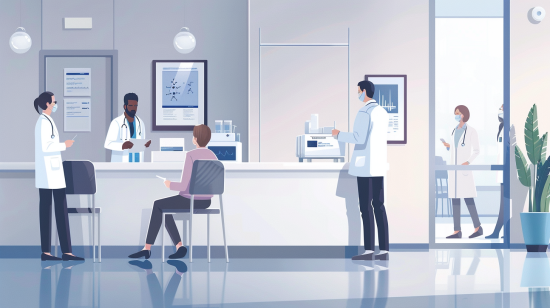The adoption of point-of-care polymerase chain reaction (PCR) testing represents a significant leap forward in diagnostic capabilities. With its promise of speed, accuracy, and efficiency, PCR testing technology is setting a new standard in patient care. However, the integration of such advanced diagnostics into the urgent care setting raises several pertinent questions. From workflow integration to cost implications and clinical benefits, let’s dive into the five most frequently asked questions about implementing a PCR test into urgent care, providing you with the insights you need to make informed decisions for your clinic.
1. How does PCR at the point of care differentiate my urgent care clinic?
Bringing PCR in urgent care clinics not only provides accurate and rapid STI test results but also sets your clinic apart from others. Offering this advanced diagnostic method demonstrates your dedication to high-quality patient care and improved patient experience. PCR tests at the point of care allow for faster diagnosis and appropriate treatment in the same visit, relieving patient anxiety associated with STI and improving patient satisfaction. Patients will appreciate the convenience and prompt care, enhancing your clinic’s reputation.
2. Will PCR at the point of care disrupt my current workflow?
It’s natural to assume that new rapid testing technology might disrupt your current workflow. However, the integration of PCR tests at the point of care, such as the Visby Medical Sexual Health Test can actually streamline the testing process for the three most common and curable STI – chlamydia, gonorrhea and trichomoniasis. It eliminates the need to send tests to an external lab, reduces wait times for results, and reduces patient callbacks and follow-up appointments. Your patients will thank you for one appointment that takes care of their needs and your staff will appreciate ~15 seconds of hands-on time and the more efficient workflow.
3. How does PCR testing at the point of care help reduce STI testing costs?
The long-term benefits of PCR tests at the point of care outweigh the costs. By bringing the process in-house, you can significantly reduce staff time spent on STI patient follow-ups, decrease sample shipping fees and presumptive treatment costs, and even improve coding for the patient encounter.
4. Why should I consider PCR tests at the point of care when STI testing volumes are low in my clinic?
Even if STI testing volumes are currently low at your clinic, rates of STIs are increasing. Integrating PCR at the point of care prepares your clinic for this increase, efficiently handling higher volumes of testing, and providing timely and accurate treatment to patients. If patients are sexually active, they may need testing and rapid test results. According to the CDC, the rates of chlamydia and gonorrhea have more than doubled in adults aged 55+ in recent years, possibly due to:
- Larger population of Baby Boomers transitioning into the senior age bracket.
- People over the age of 55 are far less likely to take precautions such as using condoms since there is less concern about getting pregnant.
- Peers and healthcare providers are less likely to talk to them about the concerns of unprotected sex.
- Individuals are living longer and higher rates of divorce mean the opportunity to engage in sexual activity with more partners increases.
5. What are the clinical benefits of rapid testing PCR at the point of care?
PCR at the point of care offers several clinical benefits, including faster diagnosis, comparable accuracy to lab sendouts, and the ability to quickly administer appropriate treatment along with patient education. This helps in better patient management and contributes to improved patient outcomes.

